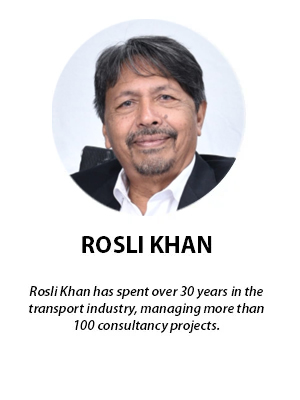
MRT3 is a circle line which had been proposed for the Klang Valley at a staggering cost of RM1 billion per km.
The 51km line was set to cost the country a staggering RM50 billion to build, prompting concerns about its economic viability.
The government has already spent RM100 billion on MRT1, MRT2 and LRT3. Unfortunately, the first two projects have not been particularly successful, while LRT3 is still under construction.
On average, the MRT1 utililisation rate (ridership over available capacity) stands only at 50% its daily capacity. Meanwhile, the newer MRT2 line is not attracting many passengers, resulting in a much lower utilisation rate.
That being the case, there is hardly any justification for building MRT3 now.
The government appears to have accepted that after both MRT3 and the High Speed Rail (HSR) were omitted from Budget 2024. Perhaps, the government should only proceed with these two initiatives if they are funded by private investors.
In my view, that is the correct approach. If the private sector finds these projects financially viable, then they should undertake them without any recourse to government funds.
Repurposing RM50 billion
I would also urge the government to consider repurposing the funds to improve public transport infrastructure and facilities in urban areas outside the Klang Valley.
The proposed RM50 billion can be reallocated towards vital public transportation initiatives in five regional growth centres – Johor Bahru, Penang (Seberang Perai), Kuching, Kuantan and Kota Kinabalu.
The government must also look at how best to reallocate these scarce resources to other critical areas in the country that need development funds to grow their local economies and attract more investors.
Extravagant spending
Budget 2024 has already allocated an additional RM4.7 billion for the construction of five previously cancelled LRT3 stations, sparking criticism of perceived extravagance.
Spending such a huge sum on stations at Tropicana, Raja Muda, Temasya, Bukit Raja and Bandar Botanik is unjustifiable as they serve very limited catchment areas.
The key question is, why spend so much to benefit small segments of the Klang Valley, especially when the rest of the country is crying out for basic public transport facilities and amenities?
The concentration of mega projects in the Klang Valley shows an inefficient planning strategy which neglects crucial regional development in other strategic parts of the country.
These places also want to be as developed as the Klang Valley to be able to attract industrial, residential and commercial investments.
That includes having better infrastructure, especially in terms of public transport facilities, to avoid the kind of traffic congestion that has become the bane of the Klang Valley.
The government should adopt a more inclusive approach by allocating sufficient funds to develop public transport infrastructure in emerging urban regional centres outside the Klang Valley.
New investment and FDIs
Such a strategy not only fosters economic growth but also contributes to social and political advancement, and may also attract foreign direct investments (FDIs).
Many foreign investors are attracted to these regional areas, but the lack of infrastructure facilities has prevented them from venturing outside the Klang Valley.
Meanwhile, the Klang Valley, with its inherent challenges including traffic congestion, high land cost, escalating operational costs, housing issues, and workforce problems, is perceived as a lost cause and can no longer attract new FDIs.
The current administration has a good opportunity to move away from the mistakes of its predecessors who had simply concentrated their focus on Klang Valley while neglecting much of the rest of the country.
This administration can make a real difference in the national economic cycle by rethinking its development strategy to focus on regional development growth and using a public transport approach to beef up urban areas across the country.
This will redistribute the main centre of employment among five new urban centres and reduce the need for the population to migrate to the Klang Valley.
A regional growth strategy will enhance the country’s economy, ensuring a better quality of life and lower the astronomical cost of living in the Klang Valley. - FMT
The views expressed are those of the writer and do not necessarily reflect those of MMKtT.


No comments:
Post a Comment
Note: Only a member of this blog may post a comment.